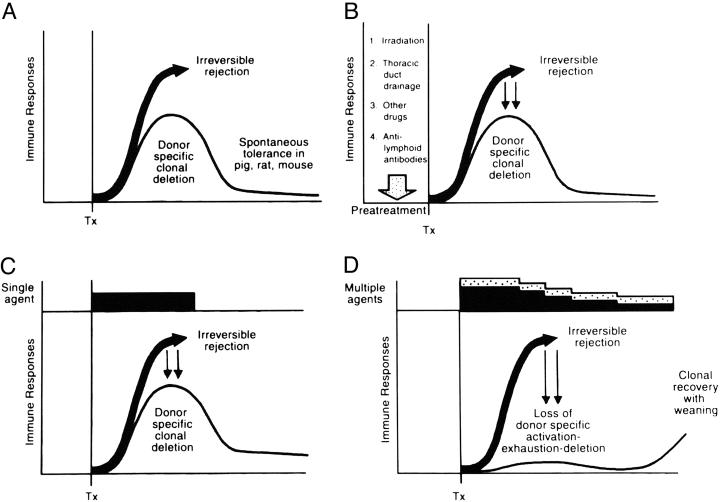Fig. 7.
The role of immunosuppression in deletional tolerance. (A) Spontaneous tolerance (thin line) rather than rejection (thick arrow) may develop in the absence of immunosuppression if the unmodified recipient response is too weak to eliminate the migratory donor cells. (B) The pretreatment principle. Recipient immune responsiveness is reduced into the deletable range by cytoablation or cytoreduction before arrival of the alloantigen. (C) The minimal immunosuppression principle. The recipient response is kept in the deletable range with immunosuppression (black bar) after transplantation. (D) The antitolerogenic effect of overimmunosuppression (multilayered bars) after arrival of the allograft, with variable prevention of clonal exhaustion-deletion (see text). Horizontal axis, time. Tx, transplantation

